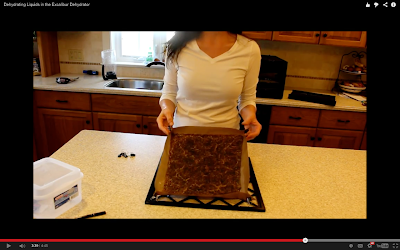I have been dying to find a way to dry soups and stews, but the mess just isn't worth it! So far the only suggestion I have found is to use parchment paper to make a bowl, but almond milk (and a lot of other foods) stick to the parchment, making a huge mess and wasting a lot of the food.
Finding a way to dry liquids has been a special challenge, but I have finally come up with an easy way to dry any liquids with the dryer! Using the Paraflexx liners (or the generic ones from Amazon), and a few binder clips at the corners of the flexible liners, you can make a "bowl" that will fit your tray perfectly!
 |
| A Paraflexx Liner and four binder clips is all you need |
 |
| Simply pinch the corners and clip to make a bowl as deep as you like |
 |
| Now you can dry liquids very easily with no mess! |
In this video, I demonstrate drying almond milk and an awesome mushroom and beef gravy.







